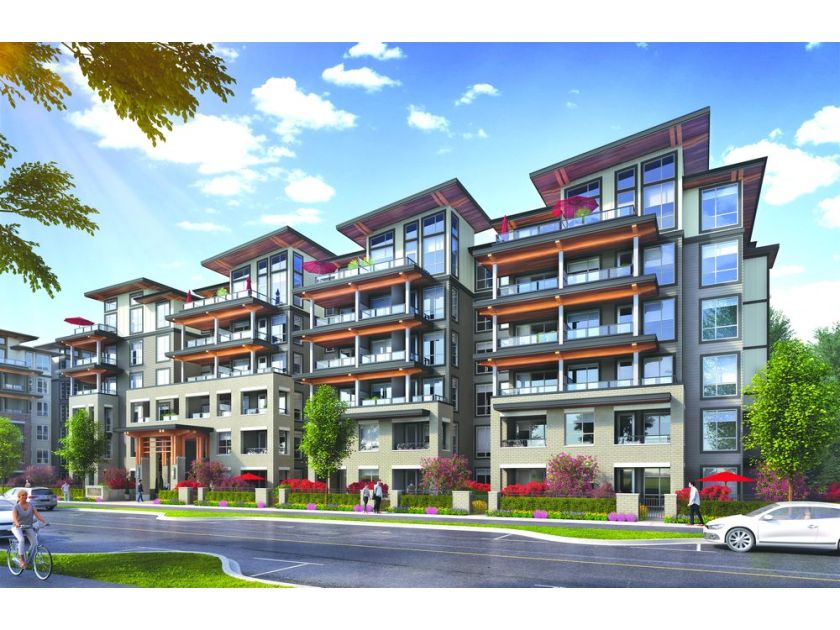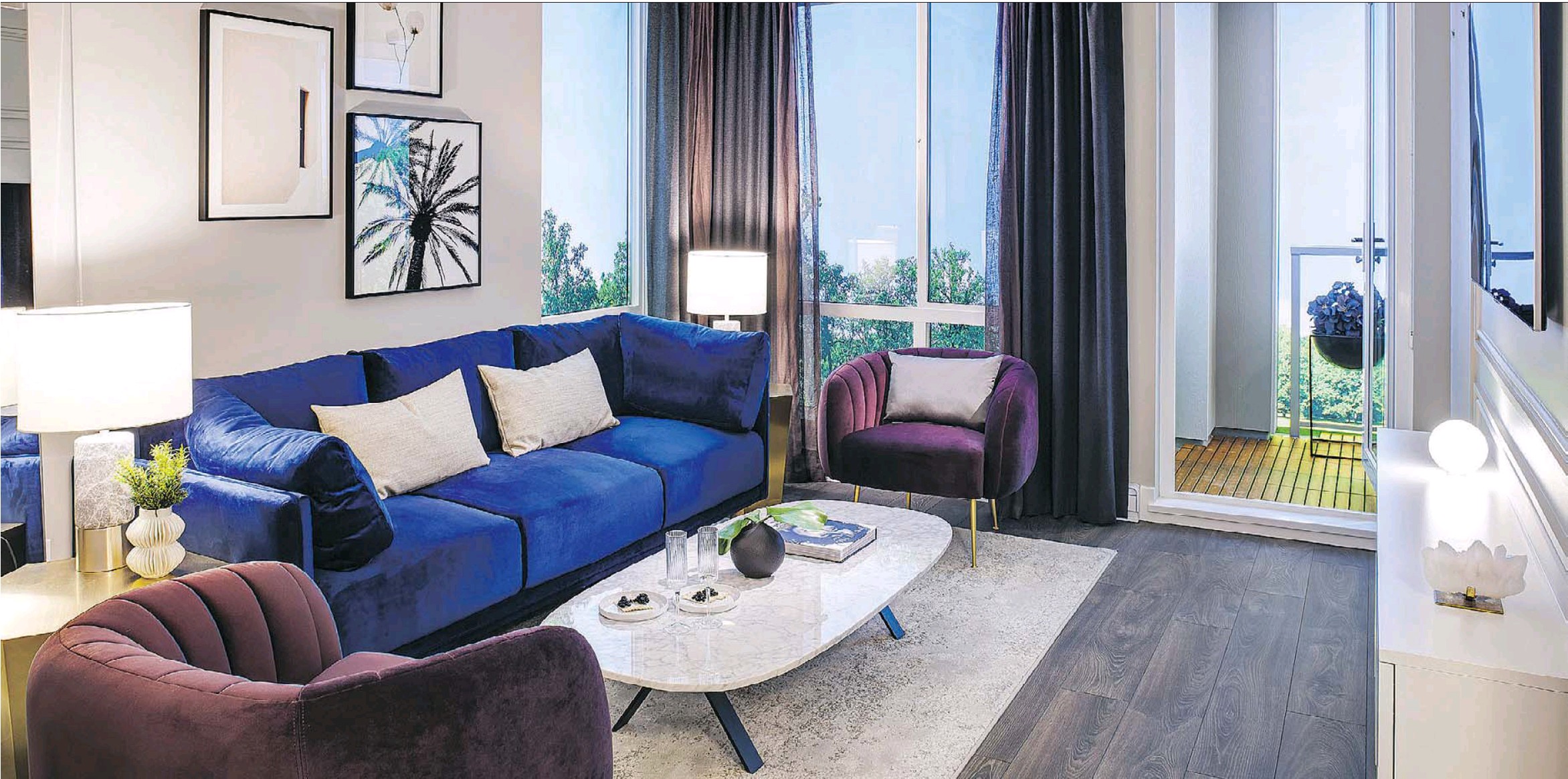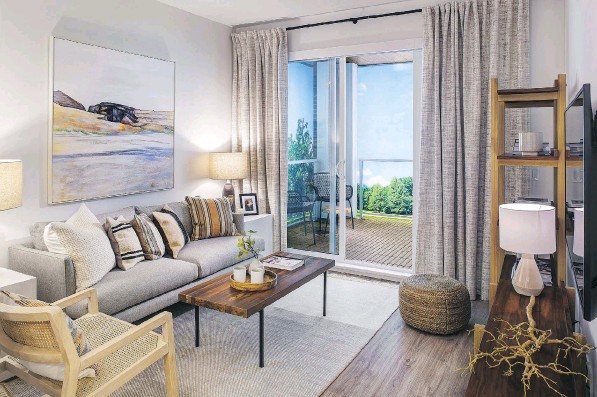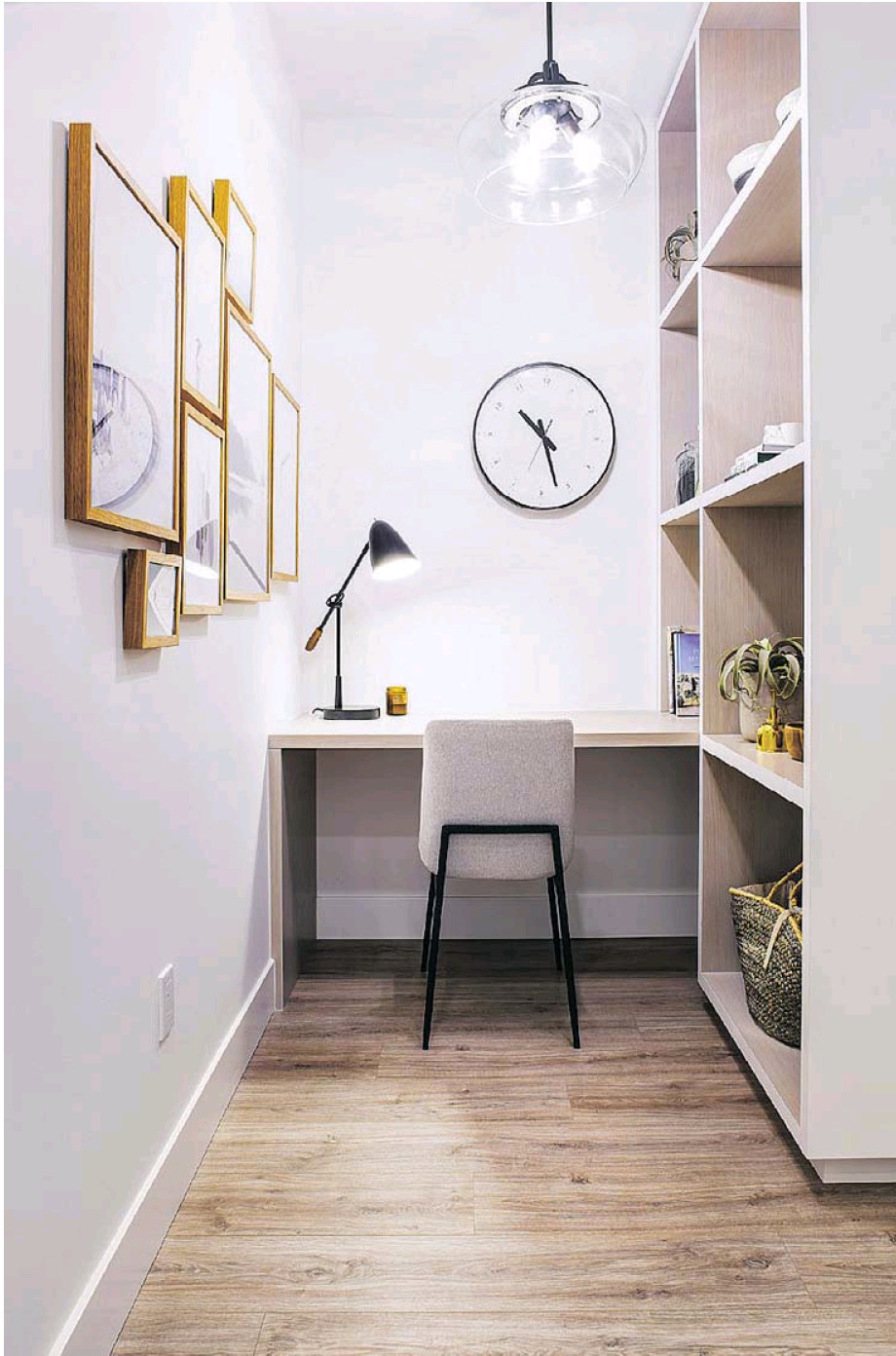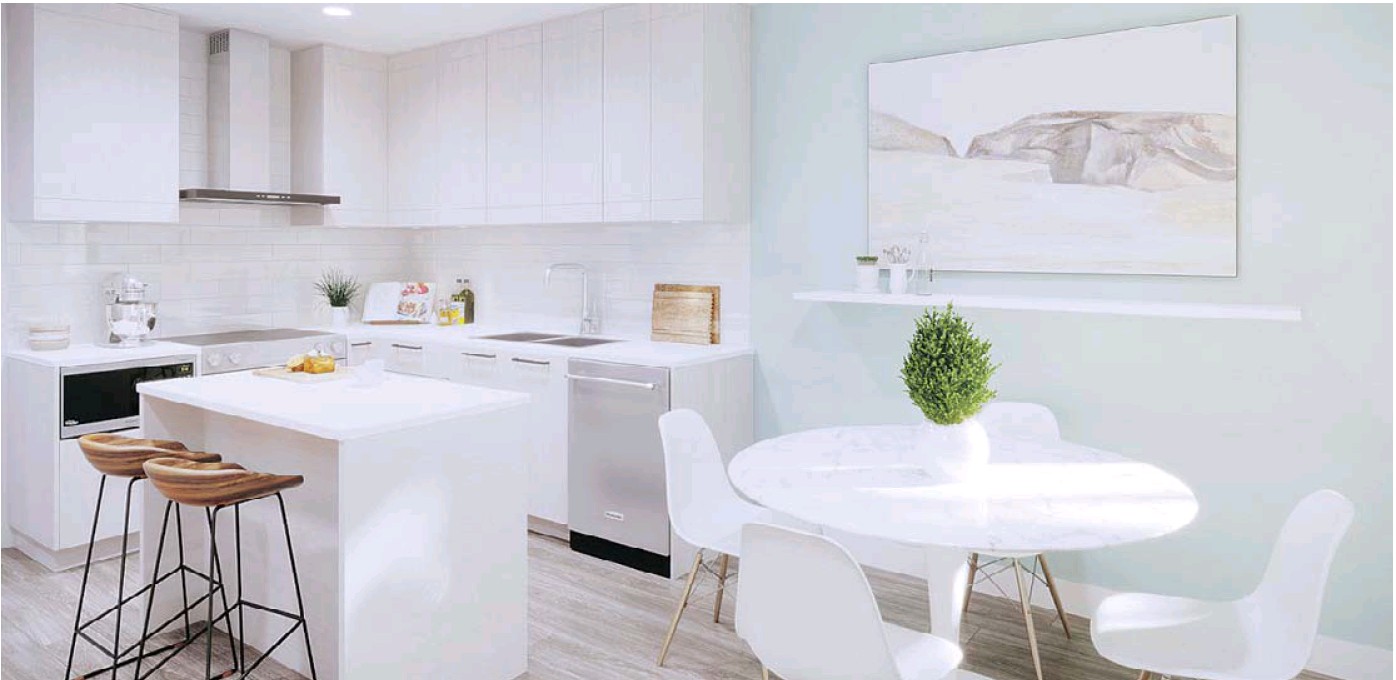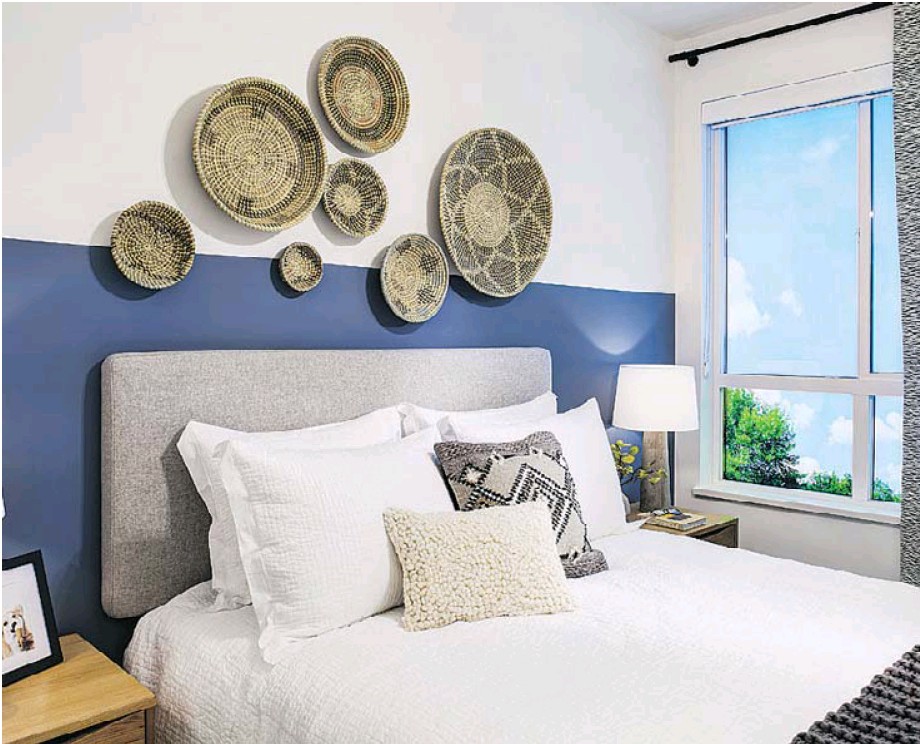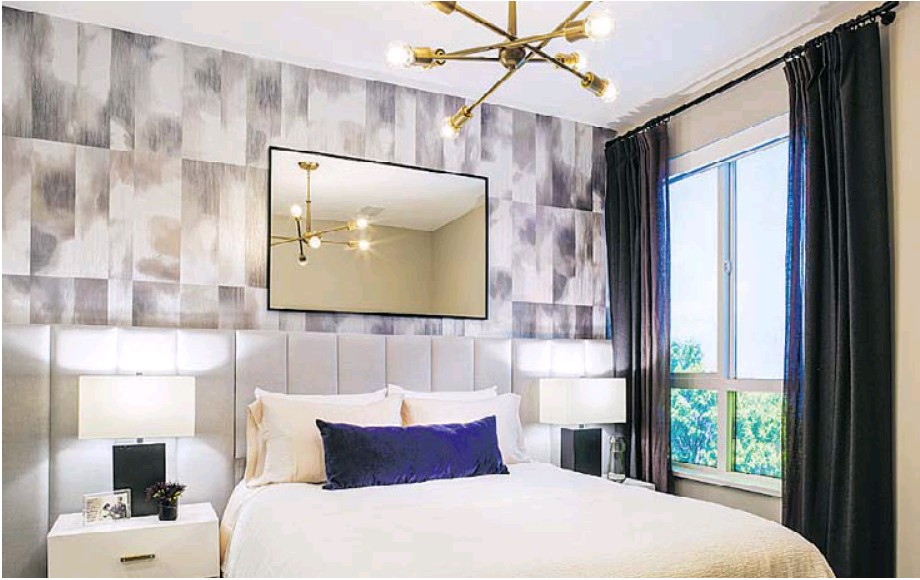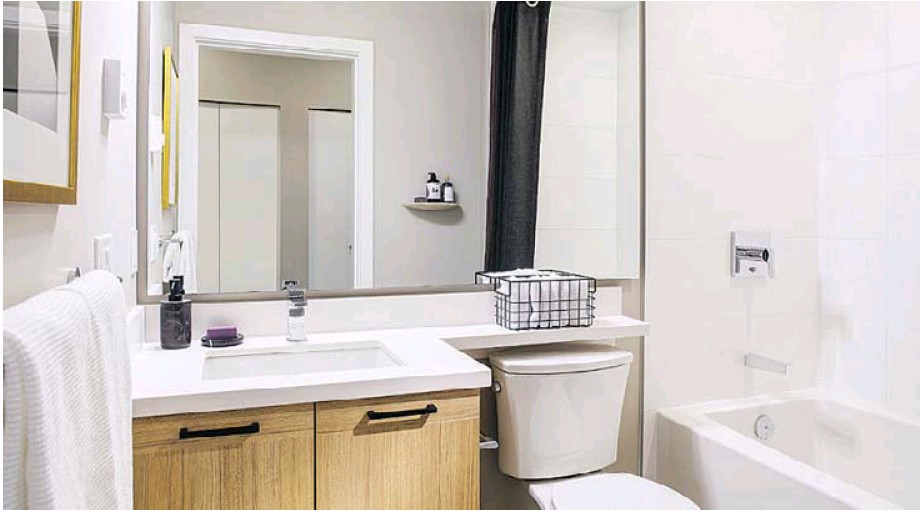When renters with good jobs find their income is mostly going to housing, politicians are under the gun to find solutions.
Dan Fumano & Lori Culbert
The Vancouver Sun
Accountant Lotfi Fetoui and his wife are raising their baby in a one-bedroom apartment in an older, low-rise Metrotown building where they have lived for five years and where they can afford the $900-a-month rent.
But the building, like many others in this gentrifying area of Burnaby, has been purchased by a developer who has told residents to move out by April — so the building can be demolished and replaced with a condo complex.
Fetoui, who works in downtown Vancouver and wants to live near SkyTrain, would love to stay in the neighbourhood, but rent in a similar building across the street is $1,650 a month.
“With these new prices we will be surviving, not living. We will work to pay the rent,” said Fetoui, adding he will vote for a mayoral candidate who will protect affordable rental stock. “I want to know: Who is the person who will take care of us, the middle class?”
Housing is the top issue for most voters in this municipal election, a recent report found, although some like Fetoui want access to affordable places to raise families while others are concerned about over-development.
“Residents’ concerns about affordable housing were most pronounced in the City of Vancouver, the North Shore and Burnaby-New Westminster,” says the report, VoteLocal, based on a recent survey by the Mustel Group, FleishmanHillard Highroad, and the Greater Vancouver Board of Trade.
In Burnaby, many residents like Fetoui are facing “demovictions” as older, smaller apartment buildings are replaced with more expensive skyscrapers. On the North Shore, the concern is how to help key members of society — families, young people and workers — afford to live there. In Vancouver, candidates argue over the role of housing supply in solving the crisis.
North Shore
In West Vancouver, where most residences are still single-family detached homes, worth $2.5 million on average, the idea of affordable housing seems improbable.
But it is a top priority for some candidates running for mayor, although none is advocating what has become the common response in Vancouver and Burnaby: build highrises.
Such towers would, most candidates agree, put too many vehicles on already congested North Shore roads, block view corridors and ruin the character of seaside neighbourhoods.
Mark Sager — a lawyer who was mayor from 1990 to 1996, and is trying to return to city hall — argues the district needs family-friendly, below-market housing for teachers, nurses and police officers.
“We have so many people commuting way too far,” said Sager. “My friends who are firefighters live in Squamish. … We can’t have our first responders, the people we depend on, commuting hours away.”
He promises creative solutions. For example, West Vancouver has many gas stations, he said, so some of that land could be re-purposed by the district for housing. City halls can encourage these types of complexes, he argued, by immediately zoning properties for exactly what they want built.
Mary-Ann Booth, a two-term councillor running for mayor, supported two highrise projects near the north end of the Lions Gate Bridge because of their proximity to transit and because they didn’t displace renters. But she argued any further development along the district’s main street, Marine Drive, should be low-rise units geared to the “missing-middle” workers, young people and families that Sager is concerned about.
But how do you create something affordable without the density provided by a highrise?
Booth points to council’s proposal to build subsidized housing on district-owned land for moderate-income people who work in West Vancouver or for families with children who go to school there. The proposal includes 200 units, most of them to be rented at below-market rates.
Coun. Christine Cassidy, who also wants to be mayor, says the solution is more duplexes and low-rise apartments that will be “more reasonable” than a single-family home.
Asked whether a new $2-million townhouse is truly affordable, she said West Vancouver has never been an enclave for low-income families and that new developments should focus on being “achievable or obtainable,” rather than affordable.
“That has historically been the case in West Vancouver. It is individuals who are coming in here who do have to have reasonable jobs and will likely have to cinch their belt financially to come into the community,” she said.
Also running for mayor is a university student, Nolan Strong, who said he would advocate housing that is “attainable” for middle-income people but argued it wouldn’t be practical to build low-cost housing in West Vancouver. The fifth candidate is Rosa Jafari, whose contact information was not available.
Across the Capilano River to the east, the District of North Vancouver faces similar affordability challenges. Voters there will have a non-binding question on next month’s ballot, asking whether they would authorize the district to spend up to $150 million to build 1,000 units to be offered at below-market rents.
Former district councillor Mike Little is campaigning for mayor and arguing that the district is “building too much, too fast,” saying a building many high-end condo projects has not created affordable housing.
Instead, the district should make it easier and cheaper for people to create secondary suites and multi-generational housing in their exiting homes, he said.
He said projects like the one on the referendum question are flawed if the below-market rent is tied to the average income of North Vancouver residents. Rather, below-market rent needs to be based on the average income of residents in all of Metro, because it is people working on the North Shore but living in Surrey or Langley that need to be able to afford these new units, he said.
While residents in rapidly densifying neighbourhoods, such as Edgemont Village, may have “construction fatigue,” mayoral candidate Glen Webb said North Vancouverites must support new housing for families and young people. Otherwise, he said, the district will lose school funding because of a loss of fewer students and businesses will continue to struggle to find workers.
“In the long run, if we don’t create affordable housing projects, there won’t be anyone in Edgemont village to serve our coffee or bake your bread or teach at your school or to be a nurse at Lions Gate Hospital,” said Webb, a businessman.
Webb offers several solutions, including granny suites, infill housing and innovative “co-housing projects,” where residents own their own homes, but share common areas including a community kitchen.
Mayoral candidate Ash Amlani, who served on the district’s community services advisory committee and the B.C. take home naloxone advisory board, said traffic congestion is so bad on the North Shore because people who work there can’t afford to live there. She said solutions include secondary suites and coach houses, and densifying along transit corridors.
Among the many ideas put forth by a fourth candidate, filmmaker Erez Barzilay, are “creative incentives” for developers such as tax cuts and asking the financial sector for “attractive deals” to dramatically lower the price of a home.
Burnaby
How much should cities spend on affordable housing, when that responsibility has traditionally fallen to provincial and federal governments? It’s a question municipal politicians have grappled with for years.
Burnaby’s five-term mayor, Derek Corrigan, has long taken the position that kind of spending isn’t in the city’s mandate.
In recent years, B.C.’s third most-populous municipality has been debt-free and has accumulated a reserve of more than $1 billion.
Meanwhile, Burnaby residents are familiar with stories of lower-income renters being displaced from affordable homes, particularly around Metrotown, as older multi-unit buildings like Fetoui’s are torn down to make way for highrise condos.
As Corrigan seeks his sixth term at the helm, the campaign of his main opponent, Mike Hurley, is focused on attacking the mayor’s approach to housing.
Corrigan said that during his 16 years as mayor, the federal and provincial governments have done little to support housing, while affordability has steadily eroded.
“You’ve probably heard my complaint a million times,” Corrigan said. “Cities are the least powerful of all governments. We have much more responsibility and far fewer resources and far fewer powers.”
Corrigan pointed to the challenges of Vancouver Mayor Gregor Robertson, who took office in 2008 pledging to end street homelessness by 2015.
“After spending a heck of a lot of money trying to take over those responsibilities for the feds and the province, Vision … has not succeeded in solving that housing problem,” Corrigan said. “Vancouver said: ‘We’ll take responsibility for this … ‘And the province and the feds said: ‘OK, go ahead.’”
Vancouver’s government made “an admirable attempt for them to try and fix a very serious problem, but it involved a degree of naiveté,” said Corrigan. “I think they could have stood in more solidarity with municipalities who were saying: ‘Feds and province, you must come to the table.’”
Corrigan defended Burnaby’s record on housing, saying the city has fast-tracked approvals and reduced development costs for housing projects that are affordable for residents ranging from seniors to welfare recipients to lower-income families. He and hopes the promises by the federal Liberal government and the provincial NDP government will soon bring relief.
Hurley, the retired Burnaby firefighter, said he would support using city money for affordable housing — such as the below-market rental units proposed on the North Vancouver District ballot — if it’s “done in a very effective manner.” He said he wouldn’t suggest dollar amounts until he can review Burnaby’s finances.
Hurley criticized Corrigan for allowing Burnaby’s housing market to become increasingly inhospitable for renters.
The B.C. Non-Profit Housing Association has analyzed census information for municipalities and rated the health of each rental market. Out of 522 Canadian municipalities, Burnaby is ranked 520.
“They’ve taken this hands-off approach. The narrative in Burnaby for a long time has been it’s the job of the provincial and federal governments to fund housing,” said Brian Clifford, the association’s policy manager. “We would say this is the responsibility of all levels of government.”
During the 16 years of Corrigan’s mayoralty, Burnaby had a net loss of 1,026 primary rental units, a seven per cent reduction, according to Canada Mortgage and Housing Corporation data. “Primary” refers to dwelling built specifically for the rental market. During the same period, many other Metro municipalities increased their rental supply: Vancouver had a net gain of 1,457 primary rental units (a three per cent increase), and Richmond had a net gain of 592 units (almost a 20 per cent increase).
Asked about the loss of rental units in Burnaby, Corrigan said that with the number of rental units under construction, the city will “soon see ourselves get back up to the plus side.”
Corrigan responded to Hurley’s criticism by pointing to his opponent’s lack of record.
“Mike Hurley has never been a councillor, he’s never sat on a committee, he’s never been part of the system,” Corrigan said. “He knows nothing about municipal politics. I just don’t think becoming the mayor of a city like Burnaby is an entry-level position.”
Burnaby is on track to be the first municipality in B.C. to use new powers, recently enacted by the provincial NDP, allowing municipal governments to zone areas for rental housing only. Corrigan has been advocating such powers since he was an alderman in 1990.
Corrigan’s council directed city staff in July to start work on the rental zoning bylaw, and Corrigan said he hopes it will be approved by the next council.
City of Vancouver
All the leading mayoral candidates in Vancouver are campaigning on housing affordability.
Hector Bremner, the only sitting councillor running for mayor, is pushing for a dramatic increase in housing supply to combat the affordability crisis.
Bremner is running with Yes Vancouver and is pledging to“increase the city’s home building target to 12,000 homes in the first year, subsequently raising it to 20,000 homes per year,” a goal he says is ambitious but attainable.
He isn’t the only candidate throwing around big numbers.
Independent Kennedy Stewart has pledged to build an average of 8,500 new homes a year over the next 10 years, including significant numbers of rental units with both market and below-market rents.
In November, the City of Vancouver adopted a 10-year housing plan aiming to add 7,200 new housing units a year for 10 years, or a 50-per-cent increase over recent years.
Andy Yan, director of SFU’s City Program, has analyzed CMHC data on Vancouver housing starts for the last 20 years and questions where some candidates are getting the numbers in their platforms.
“These kinds of promises by these mayoral candidates are so far off the construction capacity, and what’s happened in the past,” Yan said.
According to Statistics Canada, there were 309,418 total dwellings in Vancouver in 2016, an eight-per-cent increase over 2011. That means an average of 4,535 units were built each year.
The figures also show Vancouver had a boom of detached houses recently. During the third term of Vision Vancouver’s government, the average number of detached houses being built was up 60 per cent over its first term.
That’s both “unexpected and ironic,” Yan said. There was “this whole idea that Vancouver was in a post-SDH (single-detached-home) era,” he said. “But it’s like Mark Twain’s great quote: ‘The death of the single-detached home has been greatly exaggerated.’”
Yan said that raises the question of whether the massive amounts of construction Vancouver has experienced in recent years is creating units that might be more affordable for local workers or is mostly demolishing old houses to build new ones.
“It’s the revenge of the single detached home,” Yan said. “It’s not going out without a fight, it’s a zombie that keeps regenerating.”
The single detached home is a housing type that is almost by definition unaffordable for most Vancouverites. The median selling price of a detached house on Vancouver’s east side was $1.57 million last year. That’s less than half the price of the west side but still 24 times the city’s median household income of $65,327 a year.
Meanwhile, Yan found the housing types most affordable to working Vancouver families make up a fraction of the housing starts: row houses and townhouses made up less than three per cent of housing starts last year. Semi-detached units, including duplexes, were less than two per cent.
Other mayoral candidates have avoided specific housing targets in their platforms.
David Chen, ProVancouver’s mayoral candidate, said his party is “concerned about the big numbers and even the ones the city has in its 10-year plan. We are concerned that there is no capacity to actually increase builds because the available workers are the choke point.”
However, Chen believes it’s possible to commit to 5,000 units a year by expanding the city’s temporary modular housing program, currently focused on inexpensive homes for those with low incomes, to “middle class affordable rentals” as a “stop gap solution.”
NPA mayoral candidate Ken Sim didn’t include specific numbers in his housing platform, except for his promise to bring “up to 40,000 new units within reach” for renters by allowing two secondary suites in detached homes.
Independent Shauna Sylvester wants to make Vancouver “the North American capital of co-ops and co-housing,” and has set a target of adding 2,800 housing units at rates affordable for people on welfare, with 1,000 for women and children. But beyond that, she said big housing numbers isn’t the right approach, and she’s more interested in a target of a three per cent rental vacancy rate.
Coalition Vancouver candidate Wai Young has a different approach, and has said Vancouver doesn’t need more housing. David Cavey from Young’s campaign team said: “We are building faster than the population is growing and, more often than not, building the wrong type of housing. So, yes, the city is building too much housing.” Wai said the city needs to give priority to building rental units and starter homes.
Vancouver 1st mayoral candidate Fred Harding said he wants to review the city’s system of community amenity contributions, which are paid by developers in exchange for extra density. His party has not released a housing platform.
© 2018 Postmedia Network Inc.

